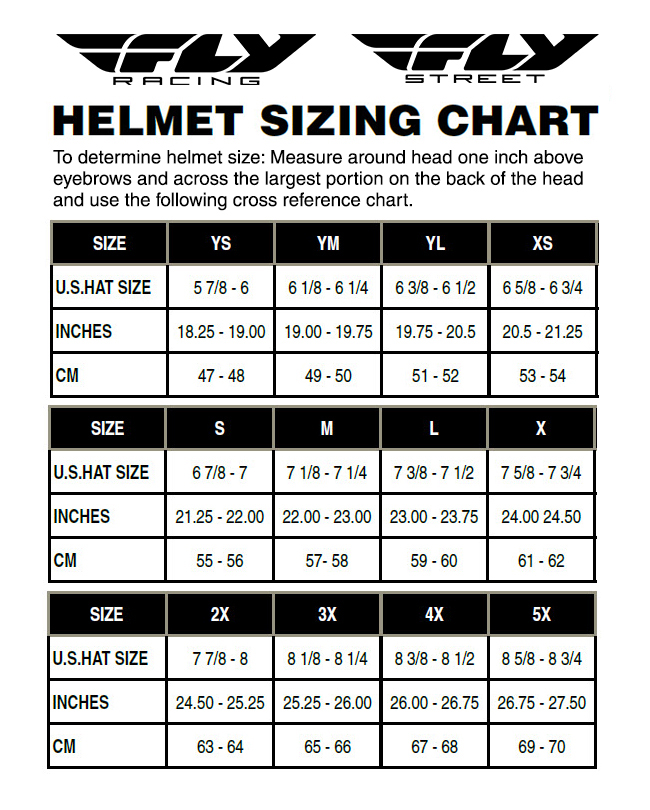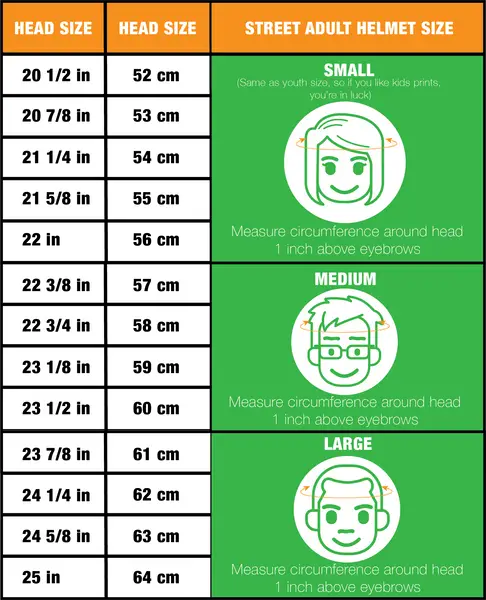The circumference of your head determines bike helmet sizes. Measure around your head just above your eyebrows.
Choosing the right bike helmet size is crucial for safety and comfort. A well-fitted helmet protects your head effectively during rides. Measure your head accurately using a flexible tape measure. Start just above your eyebrows and wrap around the widest part of your head.
Compare your measurement with the helmet size chart provided by the manufacturer. Sizes typically range from small to extra-large, covering various head circumferences. Ensure the helmet fits snugly without causing discomfort.
Always try on the helmet before purchase to confirm the fit. Proper helmet sizing ensures maximum protection and a comfortable riding experience. Prioritize safety by selecting the correct helmet size.

Credit: www.nutcasehelmets.com
The Importance Of Proper Helmet Fit
Ensuring a proper helmet fit is crucial for bike safety. Using a bike helmet size chart helps find the ideal fit, enhancing protection and comfort.
Safety Implications Of Incorrect Helmet Sizes
A well-fitted helmet saves lives. An incorrect size can cause serious injuries. A loose helmet may fall off during an accident. A tight helmet causes discomfort and headaches.
Both scenarios are dangerous. Always measure your head size correctly. Compare it with the helmet size chart. This ensures maximum protection. Never compromise on helmet fit. Safety is the top priority.
Comfort And Performance Considerations
A helmet that fits well feels comfortable. You can wear it for long rides. It does not cause any pain. A good fit improves your biking performance.
You can focus better on the ride. You will not get distracted by discomfort. Always choose the right size. It makes your biking experience enjoyable.
Measuring Your Head For A Helmet
A soft measuring tape is essential. Make sure it’s flexible. You will also need a mirror. A friend can help too. Get a notepad and pen for writing down measurements.
Place the tape above your eyebrows. Wrap it around the largest part of your head. Ensure the tape is level all around. Check in the mirror. Write down the measurement in centimeters. Repeat to confirm accuracy.
Understanding Helmet Size Charts
Manufacturers use different sizing charts for bike helmets. Always check the chart before buying. Measure the circumference of your head. Use a soft measuring tape. Place it about an inch above your eyebrows.
Check the measurement in inches or centimeters. Match it with the manufacturer’s chart. Each brand might have slight differences. Always refer to the specific brand’s chart.
Sizing can vary between countries. A medium in one country might be different in another. European sizes are often in centimeters. US sizes might use inches.
Check both if available. Always use the chart provided by the manufacturer. This will ensure the best fit. A well-fitting helmet is crucial for safety.
Types Of Bike Helmets And Size Differences
Road bike helmets are usually lighter and more aerodynamic. They have more ventilation to keep your head cool. Mountain bike helmets are bulkier and offer more protection. They often have a visor to shield your eyes from the sun. Fit and comfort are crucial for both types. Measure your head to find the right size.
Kids’ helmets are designed to fit smaller heads. They come in fun colors and designs. Adult helmets offer more advanced features.
These include better ventilation and adjustable straps. Always check the size chart to ensure a proper fit. Safety should be the top priority for both kids and adults.
Adjusting Your Helmet For The Best Fit
Using pads inside the helmet helps to make it snug. Most helmets come with extra pads. Add or remove pads to get the perfect fit. The straps on the helmet are also important.
Adjust the straps so they form a “V” shape under your ears. Make sure the buckle is snug under your chin. The helmet should not move when you shake your head.
Fit systems are found in many modern helmets. They help you adjust the size easily. Turn the dial at the back of the helmet. This will make it tighter or looser.
Ensure the helmet sits level on your head. It should cover your forehead. Using the fit system, you can get a custom fit every time.
Troubleshooting Common Fit Issues
Pressure points can make helmets uncomfortable. Always check the padding inside. It should be even and smooth. Also, adjust the straps. They should not be too tight.
Too much pressure can hurt. If needed, change the helmet padding. Choose softer padding for more comfort.
Stability and security are key for bike helmets. Make sure the helmet does not move around. Adjust the chin straps. They should fit snugly under your chin.
The helmet should sit level on your head. It should cover your forehead. Always use the buckle to secure it. A well-fitted helmet protects better.
When To Replace Your Helmet
Choosing the right bike helmet size is crucial for safety. Replace your helmet if it no longer fits properly or shows signs of wear. A well-fitting helmet ensures maximum protection during your rides.
Life Span Of A Helmet
Helmets protect your head in accidents. They do not last forever. Most helmets should be replaced every five years. The materials inside wear out. Sunlight and weather can damage the helmet.
If the helmet has been in a crash, replace it right away. Cracks and dents weaken the helmet. A weak helmet cannot protect you well.
Signs Of Wear And Tear
Check your helmet often. Look for cracks, dents, or loose parts. The straps should be strong. They should not be frayed. The foam inside should be firm.
If the foam is soft, replace the helmet. The shell should not be damaged. If you see any damage, get a new helmet. A damaged helmet cannot keep you safe.

Credit: www.amazon.com
Staying Updated With Helmet Size Standards
New technologies make helmets safer. Helmets now have better impact protection. Some helmets use smart sensors to detect crashes. These sensors can send alerts for help. This is very important for safety.
Innovations also bring more comfort. Modern helmets are lighter. They have better ventilation systems. This keeps riders cool. Adjustable straps ensure a perfect fit for everyone.
There are new regulatory changes for helmets. These rules make sure helmets are safe. New standards are stricter. Manufacturers must follow these rules.
The impact is positive. More people feel safe wearing helmets. This increases helmet use. Fewer accidents result in severe injuries. Safety is the top priority.

Credit: xtremehelmets.com
Frequently Asked Questions
How Do I Know My Bike Helmet Size?
Measure the circumference of your head above your eyebrows. Use a sizing chart to find your helmet size.
What Size Helmet For A 22 Inch Head?
For a 22-inch head, choose a helmet size small. Always check the manufacturer’s sizing chart for accuracy.
What Size Helmet Does A 12 Year Old Need?
A 12-year-old typically needs a helmet size between 52-56 cm. Measure the head’s circumference for the best fit.
How To Calculate Helmet Size?
Measure your head circumference with a flexible tape above your eyebrows and ears. Refer to the helmet size chart for a match.
How Do I Measure My Head For A Helmet?
Use a soft tape measure around your forehead, above the eyebrows, to get the circumference.
Conclusion
Choosing the right bike helmet size ensures safety and comfort. Use our bike helmet size chart for a perfect fit.
Measure your head accurately and consult the chart before purchasing. A well-fitted helmet can make your biking experience safer and more enjoyable.
Stay protected and ride with confidence.

Steven is a professional cyclist and his passion is cycling. He has been cycling for the last 6 years and he loves using bikes while outing as well. Based on his experiences with the different types of bikes; he is sharing his opinions about various bikes so that a beginner can start right away. Find him on Twitter @thecyclistguy Happy Biking.


Leave a Reply